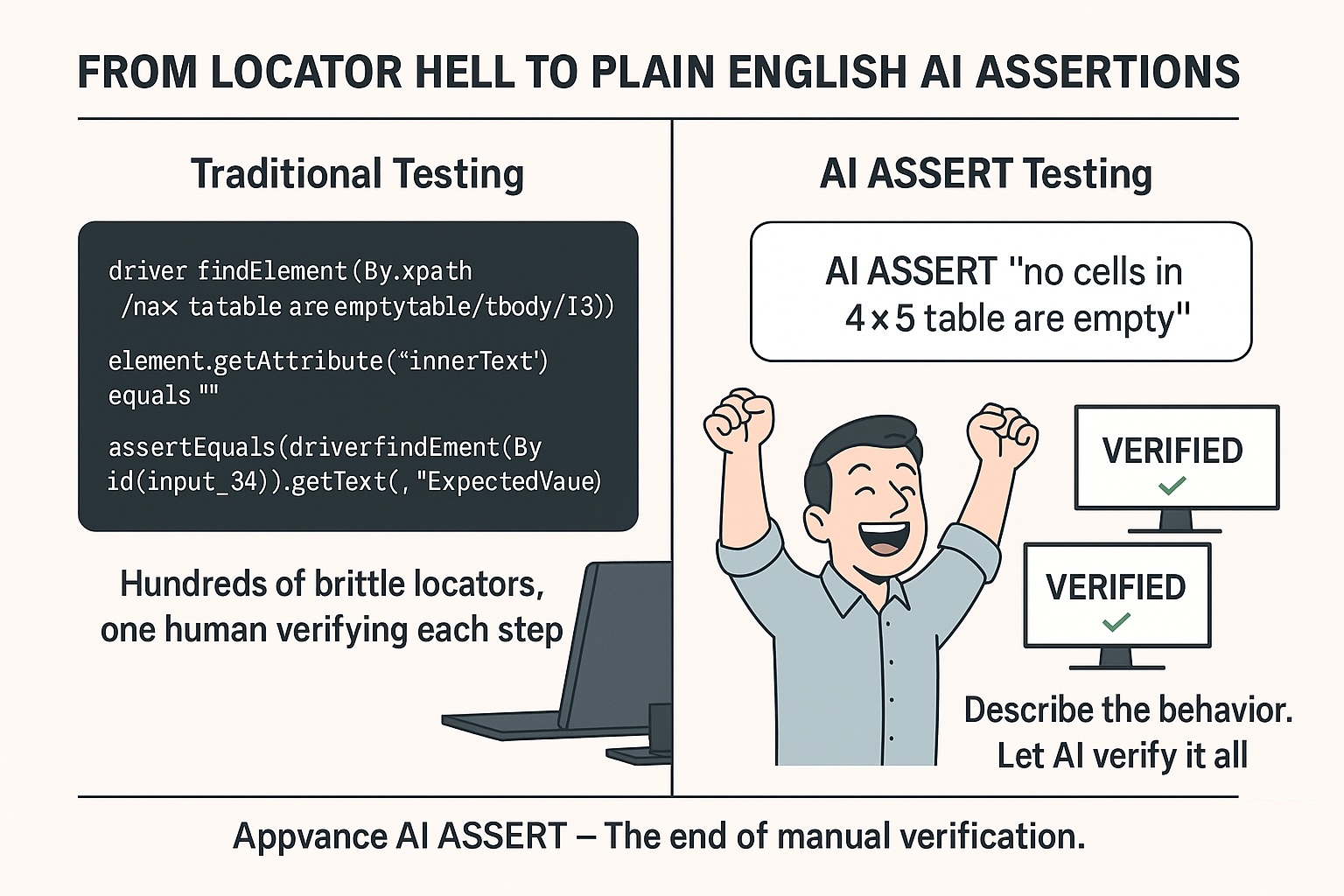Tag: AIQ

How AIQ Transforms a Cost Center Into a Continuously Learning Asset Software leaders spend years modernizing their development pipelines, yet one bottleneck continues to sabotage velocity, quality, and innovation: test debt. For CIOs managing complex portfolios, test debt is more than a QA problem—it’s an enterprise-wide drag on cycle time, release predictability, and customer experience.

And Why Appvance Leads the AI-First QA Revolution For decades, software testing has lived in the shadow of development—manual, repetitive, and notoriously slow to evolve. Even as engineering teams embrace generative AI to write code in seconds, QA has remained anchored to scripting tools, recorders, and frameworks that depend on human effort. Generative AI is

For decades, QA automation has relied on human-created scripts, recorders, and manual maintenance. Even with assistive AI sprinkled into legacy tools, the burden has stayed the same: people must still author, update, and debug test cases one by one. That model simply cannot keep up with modern software velocity. With Appvance IQ (AIQ), AI becomes

For more than a decade, the test automation story has been the same: pick a tool, point a recorder at your app, “capture” user flows, and generate scripts. Tools like Tricentis, Katalon, and even script-heavy frameworks like Playwright promise faster automation by making script creation easier. In practice, they’ve created something else: script debt. Every

For years, QA teams have been told that “AI-powered” tools would finally fix test automation. Most of those tools, however, are really assistive AI: they help humans write scripts slightly faster, auto-heal a few locators, or prioritize defects. Helpful? Sure. Transformative? Not even close. The real shift now underway is from assistive AI to AI-first

Anonymized case studies from enterprises achieving game-changing results with Appvance IQ. For years, enterprise QA has wrestled with test debt, slow maintenance, and incomplete coverage—especially across sprawling portfolios of web, mobile, and API services. Fortune 100 organizations are changing that equation with Appvance IQ (AIQ). By combining AI Script Generation, natural-language assertions, API automation, and

Why traditional QA metrics fall short—and how AI-driven insights finally give teams real visibility into quality. For decades, QA teams have measured success using the same playbook: test case counts, execution rates, defect density, pass/fail ratios. These metrics once made sense when testing was manual, predictable, and human-driven. But in today’s AI-first era of continuous

A data-driven look at how Appvance IQ reduces QA overhead and accelerates time-to-market. For most enterprises, QA spend hides in plain sight: armies of engineers writing and repairing scripts, long regression pauses, and slow triage when suites flake. Add the opportunity cost of delayed releases and escaped defects, and QA becomes one of the largest—and

Modern DevOps lives and dies by feedback speed. The longer it takes to validate a change, the more risk—and cost—creeps into delivery. Appvance IQ (AIQ) was built to plug directly into your CI/CD toolchain so testing becomes continuous, adaptive, and scalable—without asking engineers to babysit brittle scripts. Native fit with your tools AIQ integrates with

New capability validates complex visual and behavioral outcomes across web and mobile apps—just by describing them SANTA CLARA, Calif., October 14, 2025 /PRNewswire/ – Appvance, the leader in generative AI for software quality, today announced the launch of AI ASSERT, a groundbreaking new capability within its Web Designer module. With AI ASSERT, testers can validate any visual,